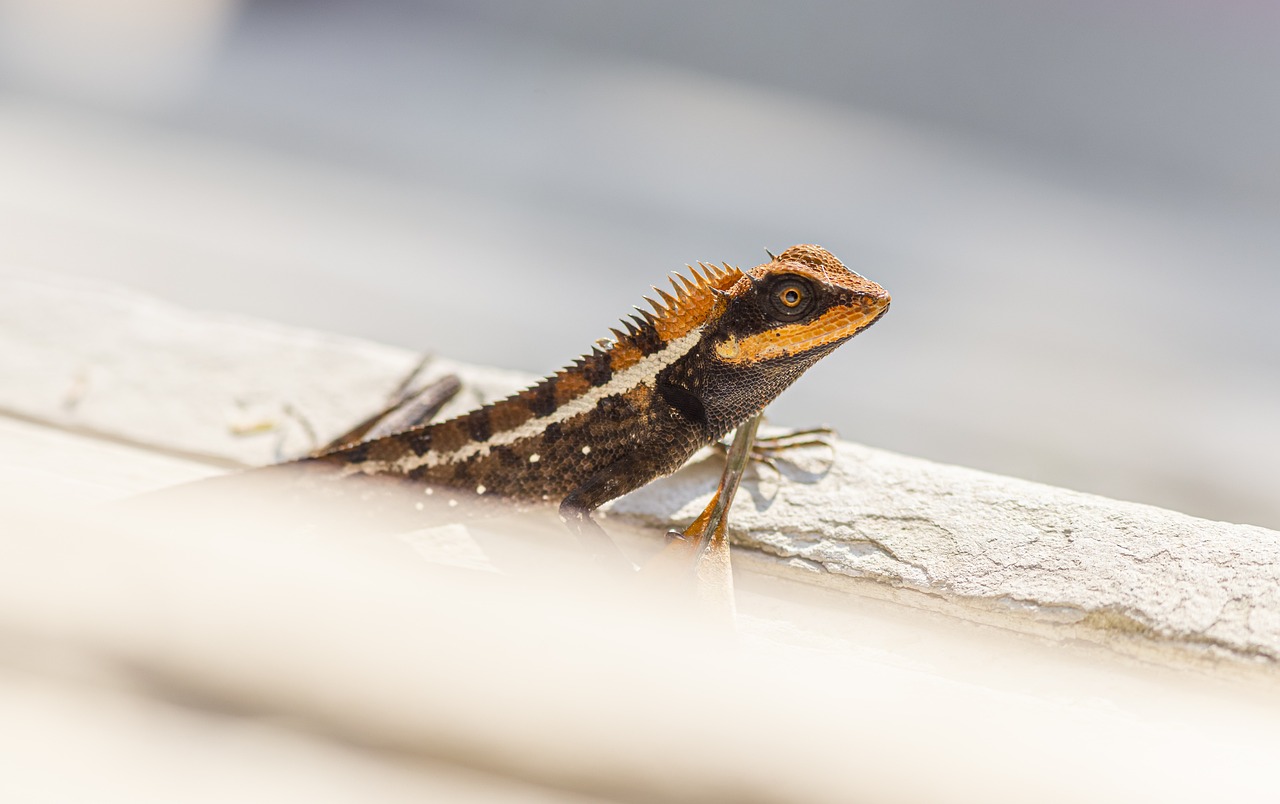Emma Gray’s Forest Lizard (Calotes emma)
Emma Gray’s Forest Lizard, scientifically known as Calotes emma, is a species of agamid lizard found in forests across South and Southeast Asia. It is known for its arboreal (tree-dwelling) nature, camouflage abilities, and territorial behavior.
Physical Description
- Size: 20–30 cm (8–12 inches) in total length, including the tail.
- Coloration:
- Typically brown, olive, or grayish-green for excellent camouflage in forest habitats.
- Males may develop bright coloration during the breeding season.
- Some individuals have a dark stripe running from the eye to the back.
- Body Features:
- Slender body with a slightly compressed shape.
- Long tail, often making up more than half its body length.
- Small spines along the back and neck, characteristic of Calotes lizards.
- Sharp claws for gripping tree bark.
- Lifespan: Typically 5–8 years in the wild.
Habitat & Distribution
- Native to:
- Found in India, Myanmar, Thailand, Laos, Cambodia, Vietnam, Malaysia, and southern China.
- Preferred Habitat:
- Tropical and subtropical forests, woodlands, and plantations.
- Often seen in lowland forests, hilly areas, and near human settlements.
- Primarily arboreal, but may descend to the ground to forage.
Behavior & Diet
- Diet:
- Insectivorous, feeding on ants, beetles, grasshoppers, caterpillars, and other small invertebrates.
- Occasionally eats small vertebrates like geckos and frogs.
- Hunting Strategy:
- Ambush predator, waiting motionless before striking.
- Uses its long tongue to snatch prey quickly.
- Daily Activity:
- Diurnal (active during the day), basking in the sun to regulate body temperature.
- Arboreal, often clinging to tree trunks and branches.
- Defense Mechanisms:
- Camouflage helps it blend into tree bark and foliage.
- Puffs up its body and may darken its skin to appear more intimidating to predators.
- Tail autotomy (tail-dropping) is not common, unlike in geckos.
Reproduction & Lifecycle
- Mating Season: Typically during the warm months (spring to summer).
- Eggs:
- Females lay 5–10 eggs in loose soil or leaf litter.
- Incubation takes about 50–70 days.
- Hatchlings:
- Newly hatched lizards are miniature versions of adults.
- Highly vulnerable to snakes, birds, and larger lizards.
Threats & Conservation
- Threats:
- Habitat loss due to deforestation and urbanization.
- Predation by birds, snakes, and mammals.
- Occasionally collected for the pet trade.
- Conservation Status:
- Listed as “Least Concern” (LC) by the IUCN, as it remains widespread and adaptable.
Interesting Facts
- Named after Emma Gray, a 19th-century British naturalist.
- Closely related to the Common Garden Lizard (Calotes versicolor), but more arboreal.
- Can change its color slightly based on mood, temperature, or environment.
- Males bob their heads and display bright colors during mating rituals.
Summary
Emma Gray’s Forest Lizard (Calotes emma) is an arboreal, insectivorous agamid native to Southeast Asia’s forests. It is known for its camouflage, territorial displays, and agile climbing skills. While not endangered, it faces threats from habitat destruction. Its ability to adapt to different environments makes it a successful and widespread reptile species.
Visited 42 times, 1 visit(s) today
Views: 259
Subscribe to the newsletter:
